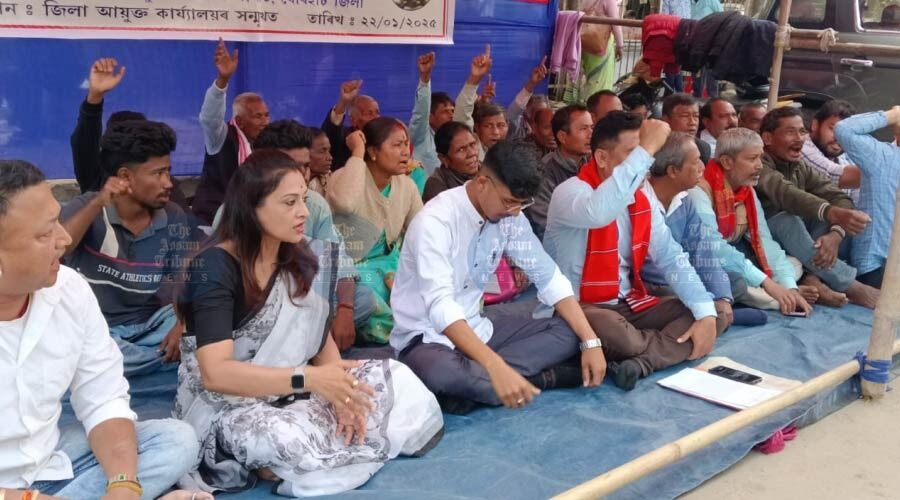
Jorhat, Jan. 22: Protests against oil exploration within the eco-sensitive zones (ESZ) of the Hollongapar Gibbon Wildlife Sanctuary escalated on Wednesday as members of the Krishak Mukti Sangram Samiti (KMSS), student groups, and civil society organisations staged a sit-in outside the District Commissioner's office in Jorhat.
The agitation follows the National Wildlife Board’s (NWB) standing committee granting permission to Vedanta-owned Cairn Oil & Gas to conduct exploratory drilling in the sanctuary's ESZ.
Chanting slogans against “capitalist exploitation”, protesters demanded an immediate halt to the project. Speaking to The Assam Tribune, one protestor highlighted that earlier protests had temporarily halted Vedanta's activities, but the NWB has once again greenlit the project, rekindling concerns.
“The project must not proceed within the eco-sensitive zones. This region is a seismic zone prone to earthquakes and is home to elephants and endangered Hoolock gibbons. Such activities jeopardise the fragile ecosystem,” stated a protestor.
The sanctuary, spanning 264.92 sq km, is renowned globally for its population of Hoolock gibbons, India’s only ape species. “Assam takes pride in the Hoolock gibbons, and their habitat must be protected. We cannot allow capitalist ventures to destroy our natural heritage,” said another demonstrator.
Protestors have vowed to intensify their agitation if drilling continues. “We are not against oil exploration, but such activities must take place outside the eco-sensitive zones,” they asserted, warning of larger mobilisations in the future.
Notably, the NWB has clarified that the permission granted to Cairn Oil & Gas is solely for exploratory purposes, and no extraction will occur even if hydrocarbon reserves are found.
The drilling site, located in a disputed area between Assam and Nagaland near Mariani in Jorhat district, spans 4.49 hectares and lies 13 km from the sanctuary boundary.
Cairn Oil & Gas has assured that any extraction, if viable reserves are discovered, will be conducted outside the sanctuary’s eco-sensitive zones. However, this has done little to assuage local concerns about the environmental and ecological impact of the project.
The protests underline a growing tension between industrial development and environmental conservation, with the sanctuary's future hanging in the balance.